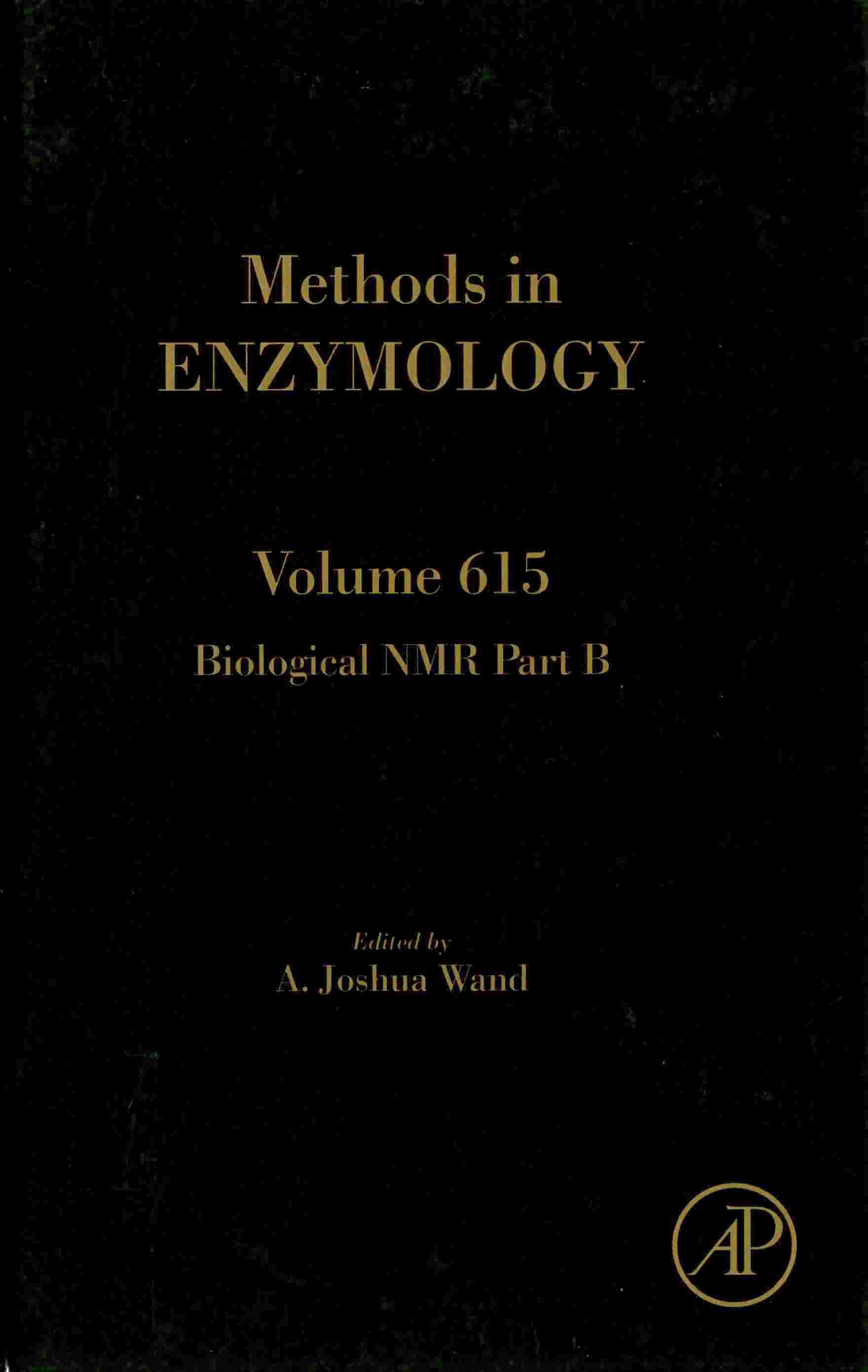 |
Biological NMR. Part B / edited by A. Joshua Wand. -- Cambridge, MA : Academic Press, 2019. – (58.17435/C719/v.615) |
Contents
Contributors
Preface
1.
Companion Simulations and Modeling to NMR-Based Dynamical Studies of Proteins
1.
Introduction
2.
The Generalized NMR Order Parameter
3.
Conformational Entropy and Protein Dynamics
4.
J-couplings
5.
Residual Dipolar Couplings
6.
Protein Compressibility
7.
Molecular Tumbling
8.
Water Dynamics
Acknowledgment
References
2.
Reverse Micelle Encapsulation of Proteins for NMR Spectroscopy
1.
Introduction
2.
Sample Composition Considerations
3.
Spectroscopic Considerations
4.
Method for Screening RM Conditions
5.
Method for Preparation of RM Solutions in Propane or Ethane
6.
Benchmarking Encapsulation
7.
Conclusions and Outlook
Acknowledgments
References
3.
Characterizing Protein Hydration Dynamics Using Solution NMR Spectroscopy
1.
Introduction
2.
Theoretical and Practical Considerations
3. Preparation of Protein Encapsulated RM
Samples
4. NMR Spectroscopy and Experimental Setup
5. Data Collection and Analysis
6. Conclusions
Acknowledgments
References
4. Understanding Protein Function Through an
Ensemble Description: Characterization of Functional States by 19F
NMR
1. 19F-Reporters That Can Be
Biosynthetically Incorporated Into Proteins
2. Approaches to Chemical Tagging of Proteins
by 19F Reporters
3. Improving Delineation of States by 19F
NMR
4. Distinguishing States by Topology
Measurements That Focus on Solvent Exposure and Hydrophobicity
5. Relaxation Experiments and Simple
Approaches to Delineating States in Fast and Slow Exchange
6. Extending Resolution of States by 19F NMR
7. Validating 19F NMR Spectroscopy
by Computational Methods
8. Overview
Acknowledgments
References
5. Overhauser Dynamic Nuclear Polarization
for the Study of Hydration Dynamics, Explained
1.
Introduction
2.
Motivation for Studying Hydration Water Dynamics
3.
Experimental Techniques for Studying Hydration Water Dynamics
4.
Translational Diffusion Dynamics of Hydration Water Informs on Correlated
Properties
5.
Principle and Benefits of ODNP Relaxometry
6.
Mechanism of ODNP Relaxometry
7.
Experimental Protocol for ODNP Measurements
8.
Common Questions for ODNP Hydration Studies
9.
Development of the ODNP Technique
10. Concluding Remarks
Acknowledgments
References
6. Chemical Exchange
1.
Introduction
2.
Theory
3. Experimental Techniques and Examples
4. Conclusion
Acknowledgments
Appendix A
References
7. Characterization of Internal Protein
Dynamics and Conformational Entropy by NMR Relaxation
1. Introduction
2. NMR Spin Relaxation Methods
3. Practical Aspects of Data Collection and
Analysis
4. The Entropy Meter
5. Concluding Remarks
Acknowledgments
References
8. NMR Methods for Characterizing the Basic
Side Chains of Proteins: Electrostatic Interactions, Hydrogen Bonds, and
Conformational Dynamics
1. Introduction
2. NMR of Lys and Arg Side Chains
3. Conformational Dynamics of Lys/Arg Side
Chains
4. Ion Pairs and Hydrogen Bonds Involving Lys/Arg
Side Chains
5. Data Interpretation Facilitated by
Molecular Dynamics Simulations
6. Concluding Remarks
Acknowledgments
References
9. Solid-State NMR Spectroscopy of RNA
1. Introduction
2. Sample Preparation
3.
Resonance Assignment
4.
Restraints and Structural Calculations
5.
Characterization of Protein-RNA Interfaces
6.
Outlook
References
10. DNP-Assisted NMR Investigation of
Proteins at Endogenous Levels in Cellular Milieu
1.
Introduction
2.
DNP Samples of Proteins at Endogenous Levels in Native Environments
3.
Purified Amyloid Samples
4.
Summary and Conclusions
Acknowledgments
References
11. Identification of Unknown Metabolomics
Mixture Compounds by Combining NMR, MS, and Cheminformatics
1.
Introduction
2.
Sample Preparation
3.
NMR Experiments
4.
Analysis of NMR Spectra
5.
MS Experiments
6.
Analysis of MS Spectra
7.
NMR Chemical Shift Prediction of Library Compounds
8.
Spin System Scoring and Molecular Structural Motif Identification of Chemical
Compounds
9.
Compound Verification: Spiking With Purchased or Synthesized Candidate Compounds
10. Conclusions and Outlook
Acknowledgments
References
12. STD NMR as a Technique for Ligand
Screening and Structural Studies
1.
Introduction
2.
The STD NMR Experiment
3.
Ligand Screening
4.
Ligand Epitope Mapping
5.
Determination of the Dissociation Constant (Kd)
6.
DEEP-STD NMR
7.
Summary and Conclusions
References
13. An ELISA-Based Screening Platform for
Ligand-Receptor Discovery
1.
Introduction
2.
Overview of Workflow
3.
The High-Throughput Screen
4.
Data Analysis and Laboratory Information Management
5.
Validation of PPIs and Biophysical Characterization
6.
PPI ELISA Results
7.
Comparison With Affinity Chromatography Methods
8.
Future Prospects
Acknowledgments
References
14. Protein-Small Molecule Interactions by
WaterLOGSY
1.
Introduction
2.
The Basis of WaterLOGSY
3.
Pulse Sequence of WaterLOGSY
4.
Basic Setup for Conventional WaterLOGSY Experiments
5.
Screening by WaterLOGSY
6.
Binding Constant (KD) Determination by WaterLOGSY
7.
The Use of WaterLOGSY to Measure Bound-Ligand Solvent Accessibility
8.
Conclusion
Acknowledgments
References
15. Applications of Dissolution-DNP for NMR
Screening
1.
Introduction
2. Methods
3. Conclusions
Acknowledgment
References